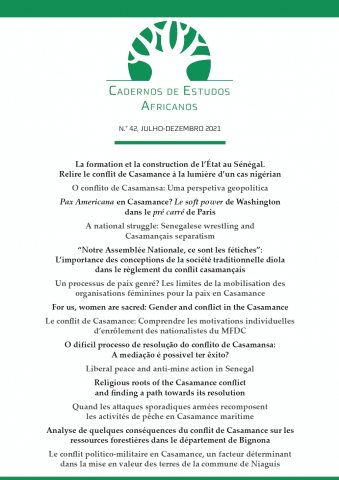La formation et la construction de l’État au Sénégal. Relire le conflit de Casamance à la lumière d’un cas nigérian
DOI:
https://doi.org/10.4000/cea.6618Abstract
Sur la longue durée, et non sans contretemps, l’État sénégalais a fait montre d’une résilience et d’une capacité d’adaptation significatives face à la contestation séparatiste en Casamance. Il a su garder le contrôle sur le gros du territoire. Il a su maintenir et, finalement, renforcer un lien avec une bonne part des populations affectées. Il a su reprendre la main sur une réponse sécuritaire d’abord très brutale. De façon asymptotique, la situation de « ni guerre ni paix » qui prévaut dans la région semble aller de plus en plus vers la paix, sans jamais l’atteindre tout à fait. Une comparaison avec le conflit qui oppose l’État nigérian au mouvement djihadiste Boko Haram permettra de mieux analyser certains des facteurs fondamentaux de cette résilience de l’État sénégalais en Casamance.
Additional Files
Published
Issue
Section
License

This work is licensed under a Creative Commons Attribution-NonCommercial-ShareAlike 4.0 International License.
I authorize the publication of the submitted article/review of which I am the author.
I also declare that this article is original, that it has not been published in any other way, and that I exclusively assign the publication rights to the journal Cadernos de Estudos Africanos. Reproduction of the article, in whole or in part, in other publications or on other media is subject to the prior authorization of the publisher Centro de Estudos Internacionais do Iscte - Instituto Universitário de Lisboa.

